Best Crypto Mining Software For 2025



Editorial Note: While we adhere to strict Editorial Integrity, this post may contain references to products from our partners. Here's an explanation for How We Make Money. None of the data and information on this webpage constitutes investment advice according to our Disclaimer.
The best mining software in 2025 are:
GMiner Cuda. Ideal for mining ETC, Beam, Cortex, and others.
Claymore Dual. Perfect for dual mining Siacoin and Decred.
MiniZ Miner. Suitable for Aion, BTG, Ycash, Flux, and more.
Easy Miner. Compatible with Bitcoin, Litecoin, Quark, and Vertcoin.
Mining software plays an essential role in enabling users to mine cryptocurrency. While setting up mining software can be straightforward, various programs are optimized for specific coins and algorithms, so choosing compatible software with the right configuration is crucial. In this guide, we will take a look at the best mining software in 2025, all applicable to different sets of user requirements.
Best mining software programs to use in 2025
Each software provides unique benefits tailored to different hardware, experience levels, and cryptocurrency preferences, allowing miners to select the best option for their needs and maximize efficiency.
GMiner CUDA
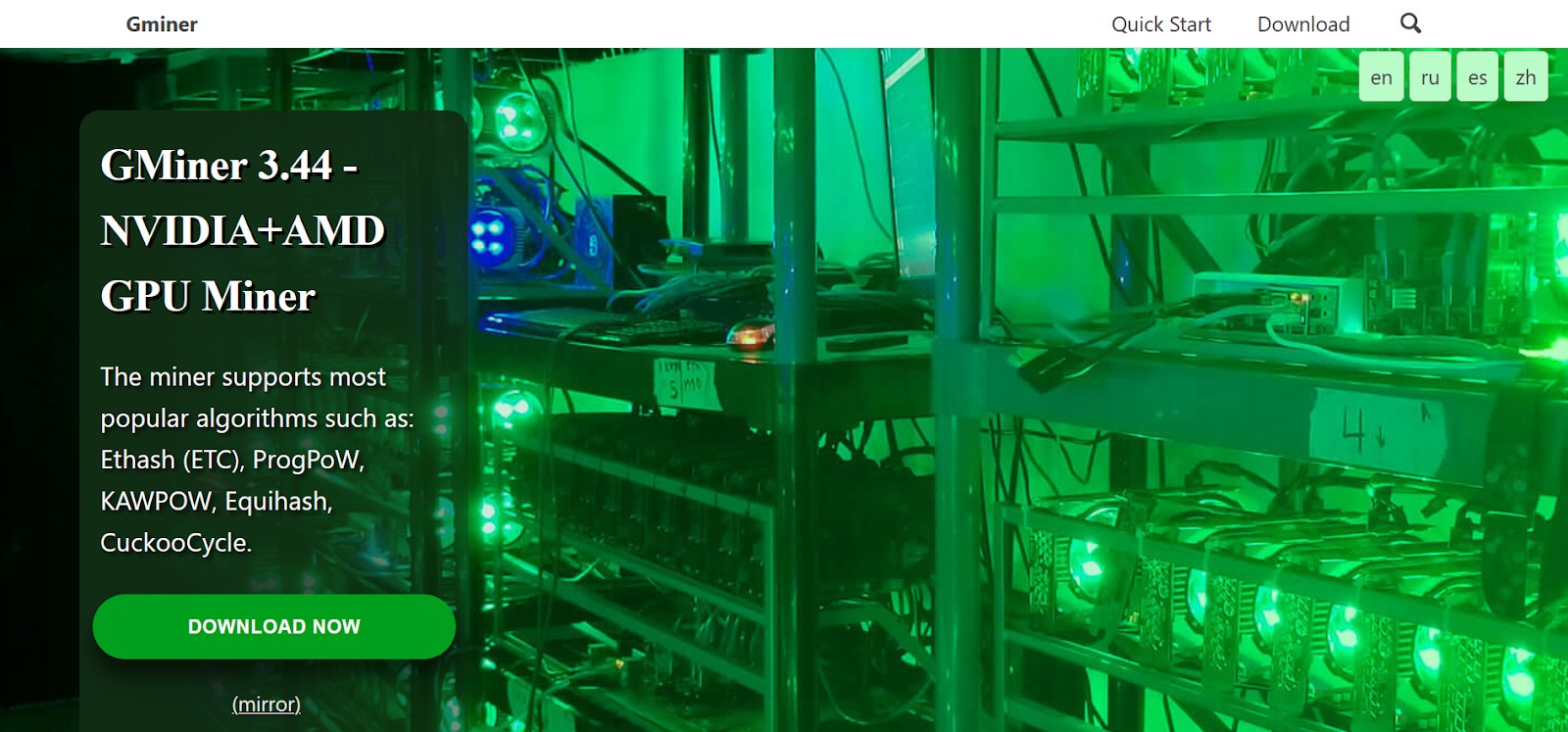
GMiner CUDA is a high-performance mining software renowned for its stability and efficiency. It’s particularly popular for mining ETC, Beam, and other coins that rely on various Equihash-based algorithms. GMiner supports both NVIDIA and AMD devices and provides a straightforward setup process, with extensive guides available online. The software uses MSI Afterburner for overclocking, allowing miners to optimize their hardware’s performance. A free software option, GMiner is a favorite among those who prioritize reliability, simplicity, and dual GPU support for improved efficiency.
Supported devices: AMD, NVIDIA
Mining algorithms: Ethash, BeamHashIII, ProgPoW, Equihash-125-4, Equihash-192-7, and more.
Compatible cryptocurrencies: Ideal for Ethereum Classic (ETC), Beam, Cortex, and other coins on supported algorithms.
Pricing: Free to use. Developer fee ranges from 0.65% to 2% depending on the algorithm.
Claymore Dual Miner
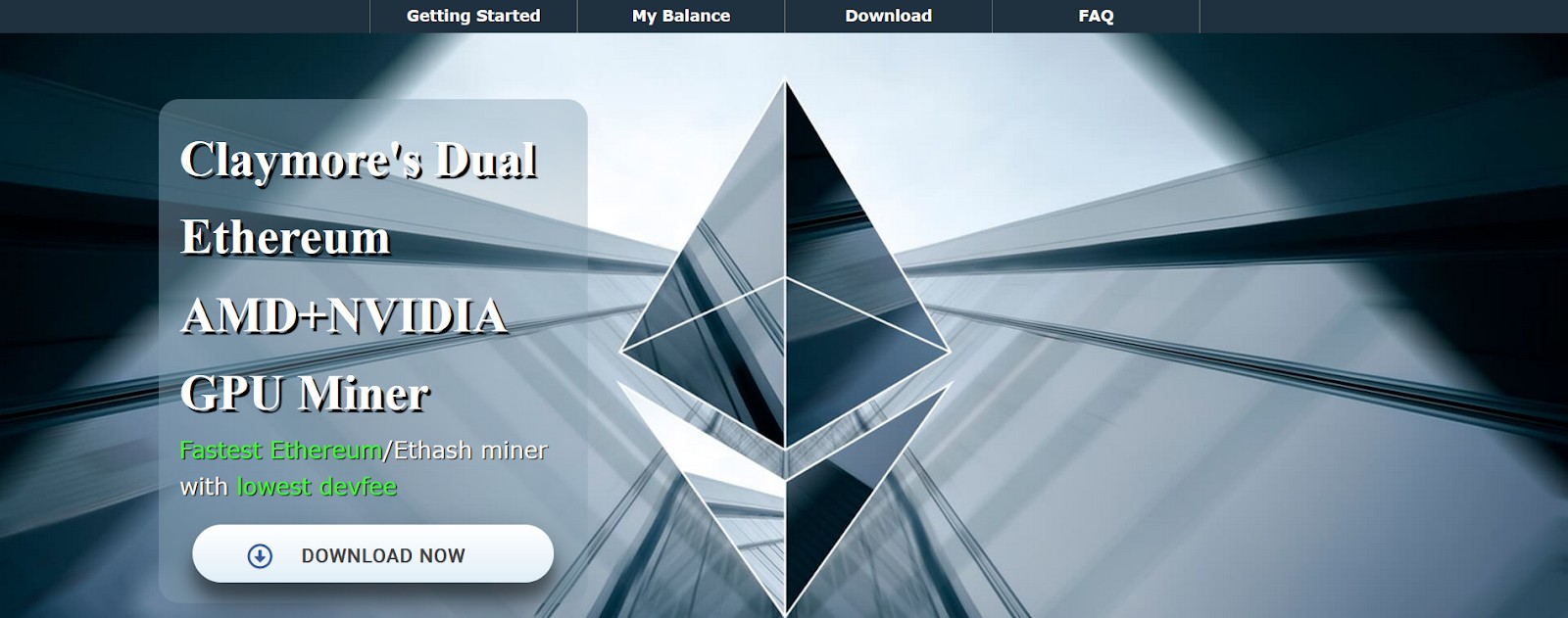
Claymore Dual Miner stands out for its dual mining capability, enabling users to mine two cryptocurrencies simultaneously, like Ethereum and Siacoin, without sacrificing performance. Compatible with both NVIDIA and AMD graphics cards, this software offers automatic GPU tuning for optimal results and temperature control to prevent overheating. With high compatibility across Windows and Linux systems, Claymore Dual Miner is known for its 3-5% faster mining speed than many competitors, thanks to its optimization for OpenCL. Its intuitive setup makes it a go-to choice for those looking to maximize profitability by mining multiple coins concurrently.
Supported devices: AMD, NVIDIA
Mining algorithms: Ethash, Lbry, Pascal, Blake2s, Keccak, allowing dual mining for added efficiency.
Compatible cryptocurrencies: Ethereum, Siacoin, Decred, and other compatible coins.
Pricing: Free to us e. Developer fee is 1% for Ethereum-only mining and 2% for dual mining.
MiniZ Miner
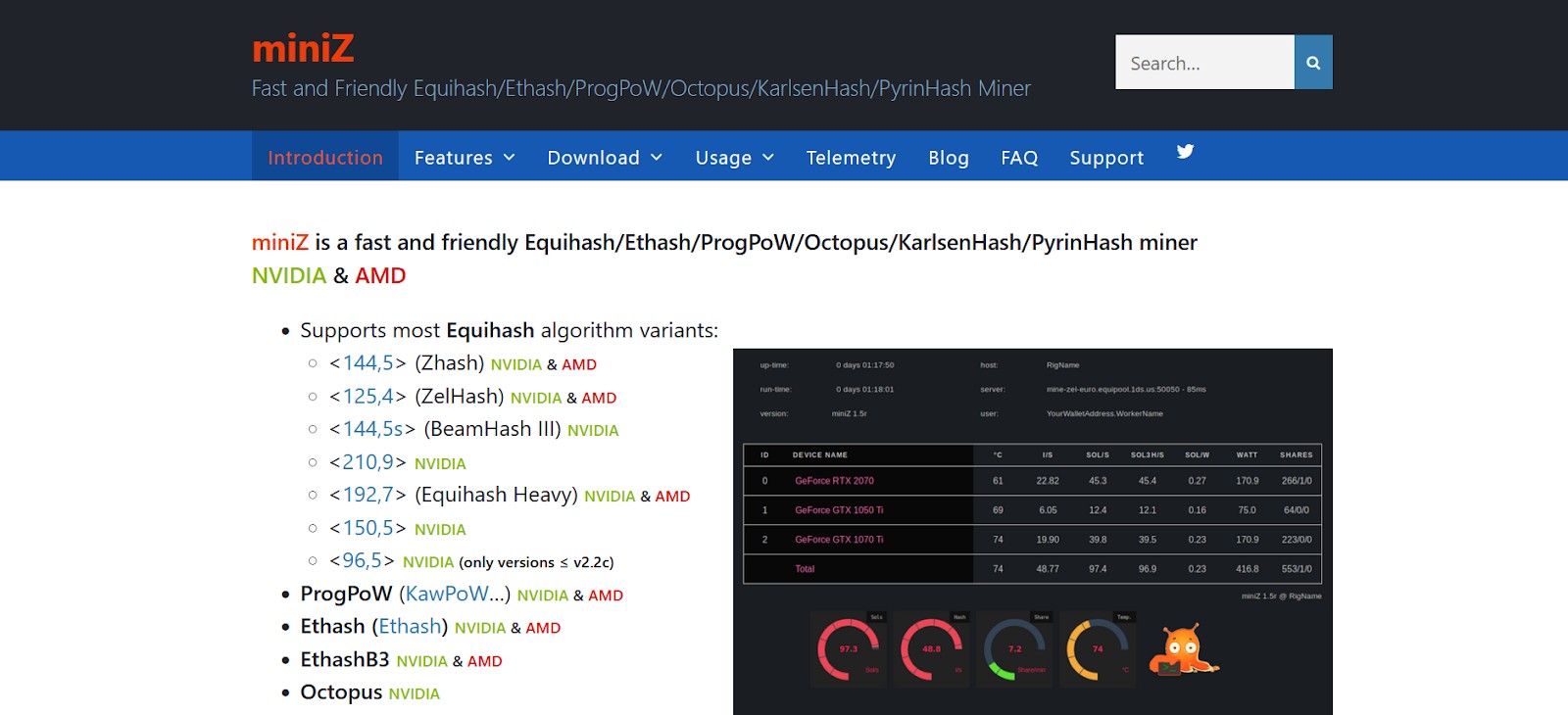
MiniZ Miner is highly efficient, designed specifically for NVIDIA GPUs, and supports a range of Equihash and BeamHash algorithms. This software is notable for its low system resource usage and high stability, making it a great choice for miners focused on Equihash-based coins. MiniZ Miner’s interface is both user-friendly and flexible, offering configuration through a console or web interface. Known for high stability and low resource consumption, MiniZ is a popular choice for miners using older NVIDIA cards or setups with limited RAM.
Supported devices: NVIDIA
Mining algorithms: BeamHash, Equihash-96-5, Equihash-125-4, Equihash-150-5, and more.
Compatible cryptocurrencies: Aion, Bitcoin Gold (BTG), Snowgem, Ycash, Flux, Zero BEAM, and BitcoinZ.
Pricing: Free to use. Developer fee is 2%.
EasyMiner
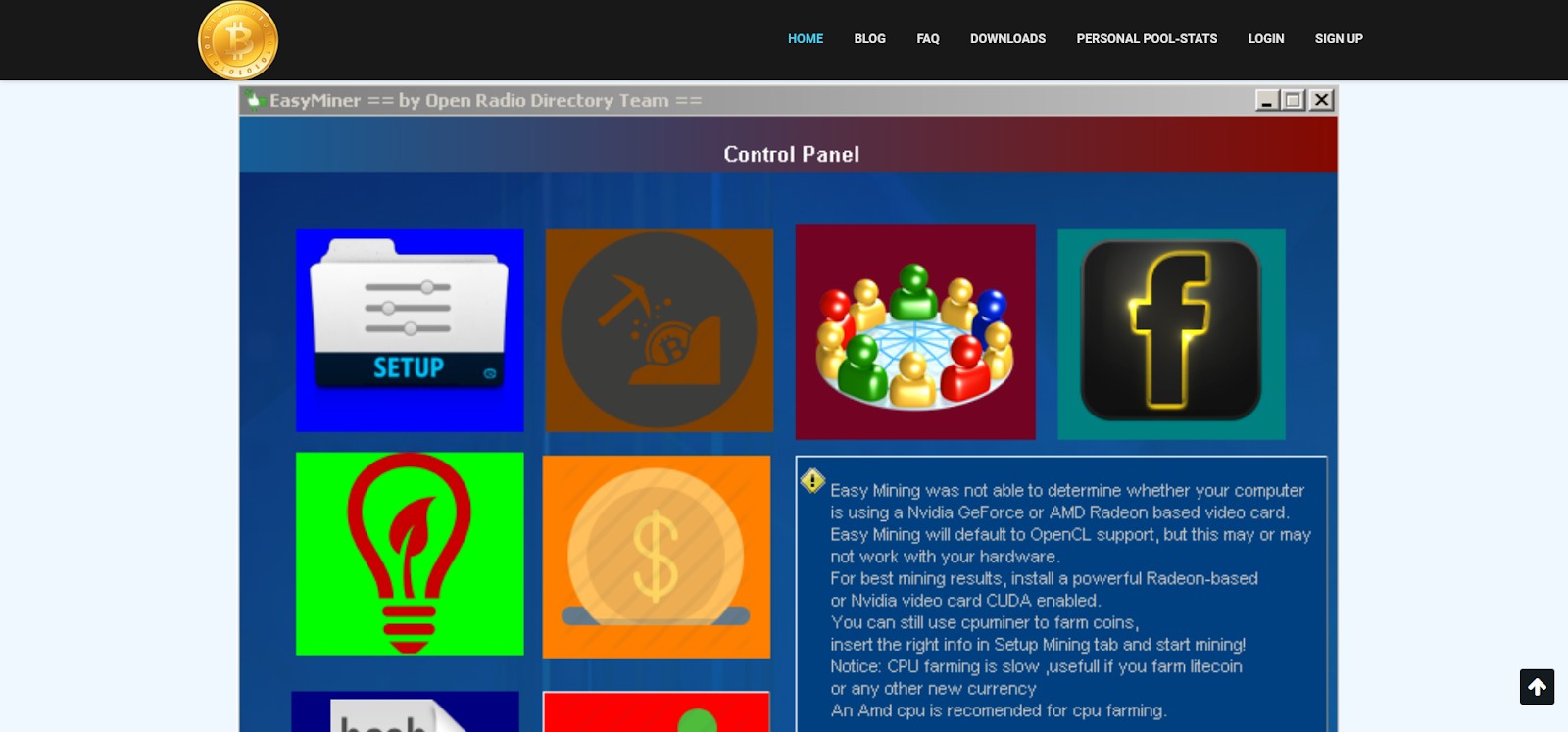
EasyMiner is an open-source, graphical mining software that appeals to beginners due to its simplicity and intuitive interface. It supports both solo and pooled mining and comes with an integrated wallet for easy management of mined coins. Advanced users can customize the software to add new functions, taking advantage of its open-source nature. EasyMiner is designed for accessibility and performance, with real-time performance statistics and earnings tracking. It’s compatible with both AMD and NVIDIAGPUs as well as CPU mining, making it versatile for different setups.
Supported devices: AMD, NVIDIA, CPU
Mining algorithms:SHA256, Scrypt, Blake2b, Lyra2RE, enabling versatility across major coins.
Compatible cryptocurrencies: Bitcoin, Litecoin, Siacoin, DeepCloud AI, Quark, Vertcoin, and others.
Pricing: Free and open-source.
NiceHash Miner
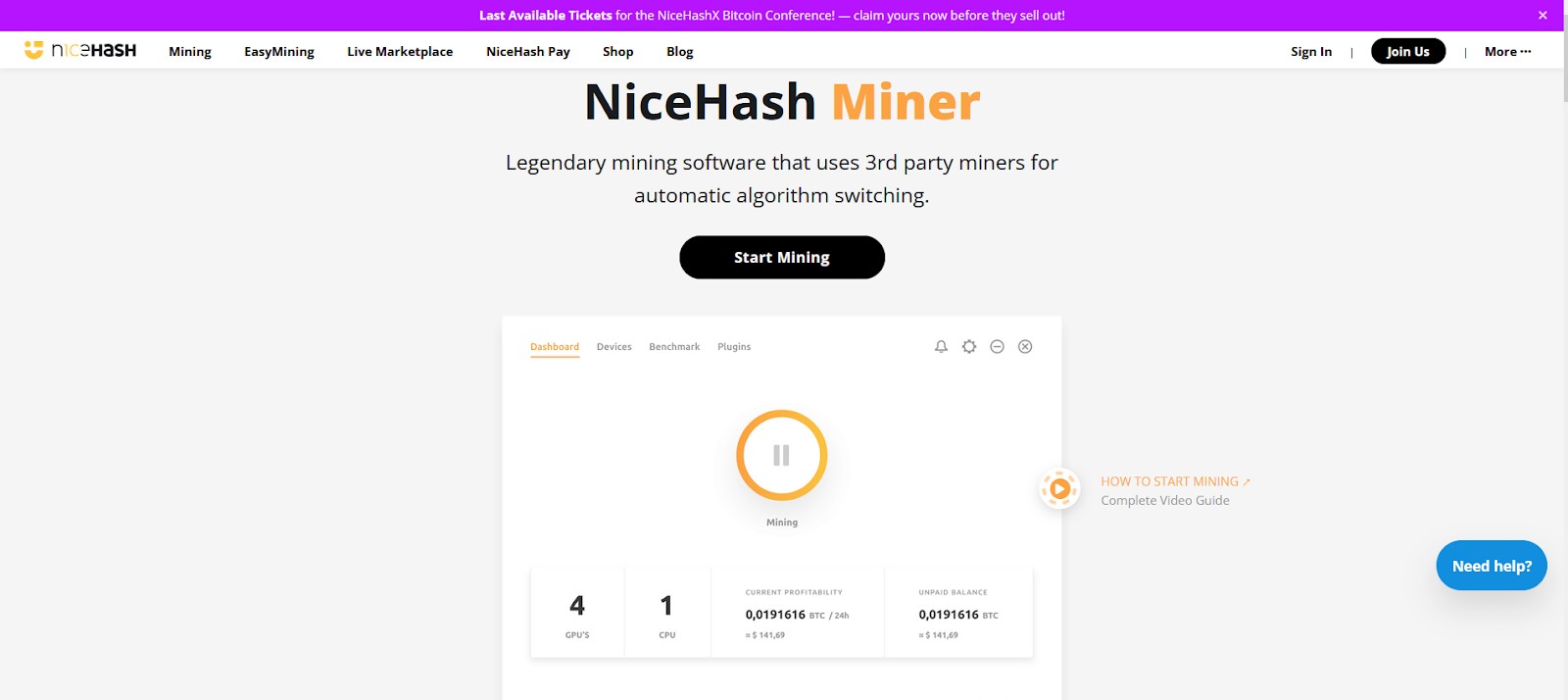
NiceHash Miner offers an automated mining experience, making it especially suitable for beginners. Rather than mining specific coins, it lets users contribute computing power to a marketplace where buyers pay in cryptocurrency. NiceHash selects the optimal algorithm based on the user’s hardware and current profitability, making it easy to get started. Known for transparency, NiceHash provides real-time earnings monitoring, with daily or weekly payouts in BTC. This platform is an excellent choice for those who prefer a hands-off approach and consistent earnings through cloud-based setups.
Supported devices: NVIDIA, AMD, CPU.
Mining algorithms: Automatically selected based on the most profitable algorithm for your hardware.
Compatible cryptocurrencies: Bitcoin, Ethereum, Litecoin, Ripple, Bitcoin Cash, Zcash.
Pricing: Free to use. NiceHash takes a percenta ge of the mining profits.
MultiMiner
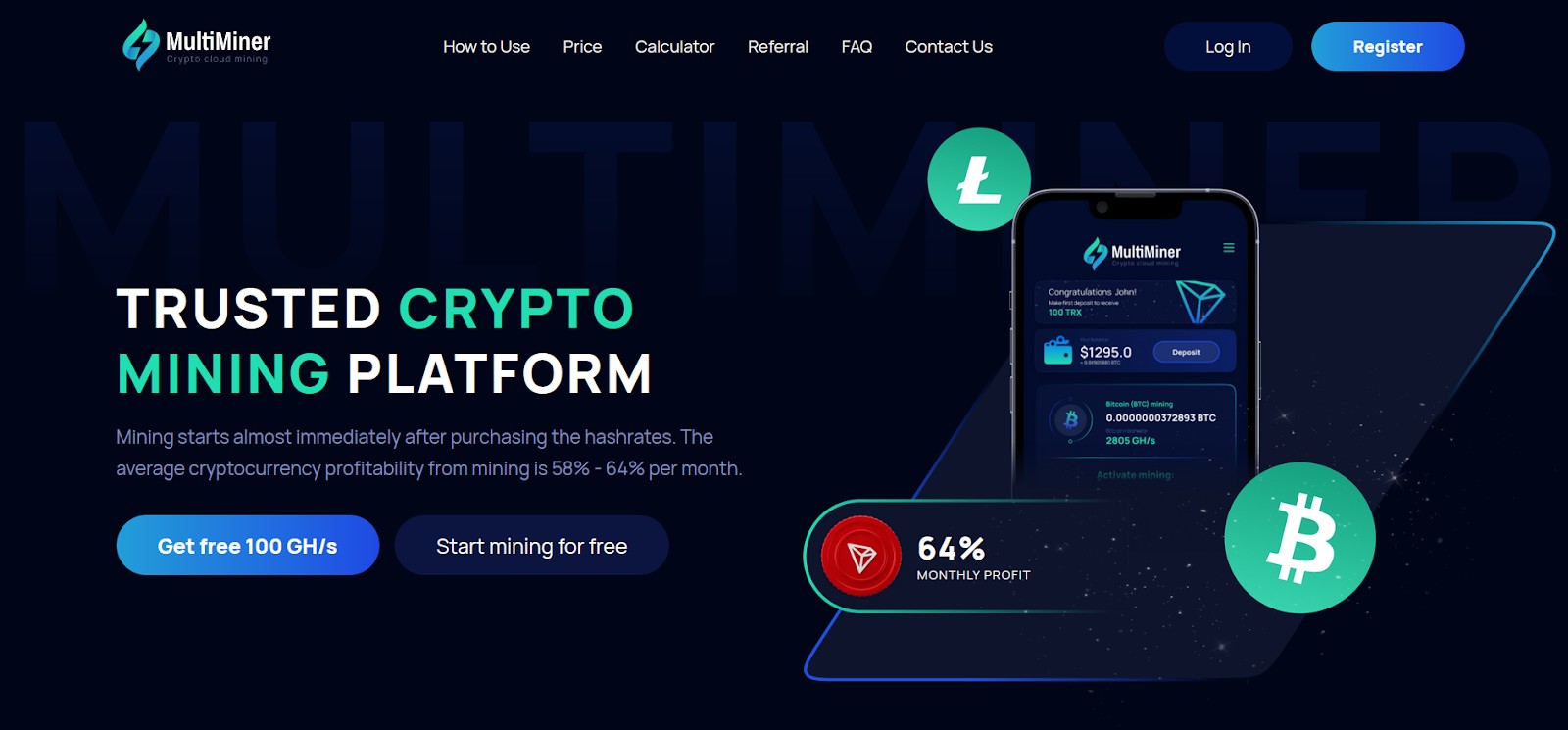
MultiMiner is one of the most versatile mining programs, offering support across various devices, including GPUs, CPUs, ASICs, and FPGAs. Its extensive algorithm compatibility allows users to mine a wide range of coins, and it offers remote management options via the MobileMiner feature, ideal for those needing control over mining while away from the setup. MultiMiner is known for its customizable settings, including emergency restart options, intensity adjustments, and advanced logging. This software is highly adaptable, catering to miners who prioritize flexibility and control.
Supported devices: GPU, CPU, ASIC, FPGA
Mining algorithms: Extensive support, including Aergo, Kawpow, Tribus, and many others.
Compatible cryptocurrencies: Bitcoin, Litecoin, Dogecoin, Maxcoin, and more.
Pricing: Free and open-source.
Fin Miner
Fin Miner is a secure, user-friendly mining software ideal for both beginners and professionals. Focused on the Ethash algorithm, Fin Miner provides detailed equipment performance reports, alerting users to temperature issues and hashrate fluctuations. The software includes an API for remote access, allowing users to manage their rigs from a distance. Endorsed by Microsoft and digitally signed for Windows, it boasts high security and 24/7 support. Its stability and ease of use make it a top choice for mining Ethereum and other Ethash-compatible coins.
Supported devices: NVIDIA, AMD
Mining algorithms: Ethash
Compatible cryptocurrencies: Ethereum Classic, Expanse, Ubiq, and other Ethash-based coins.
Pricing: Free to use. Developer fee is 1%.
Here is a detailed comparison of the best mining software options, including their supported devices, mining algorithms, compatible cryptocurrencies, pricing, and download links.
| Software name | Supported devices | Mining algorithms | Compatible cryptocurrencies | Pricing |
|---|---|---|---|---|
| GMiner CUDA | AMD, NVIDIA | Ethash, BeamHashIII, ProgPoW, Equihash-125-4, Equihash-192-7, and more. | Ideal for Ethereum Classic (ETC), Beam, Cortex, and other coins on supported algorithms. | Free to use; developer fee of 0.65% to 2% depending on the algorithm. |
| Claymore Dual Miner | AMD, NVIDIA | Ethash, Lbry, Pascal, Blake2s, Keccak; allows dual mining for added efficiency. | Ethereum, Siacoin, Decred, and other compatible coins. | Free to use; developer fee of 1% for Ethereum-only mining and 2% for dual mining. |
| MiniZ Miner | NVIDIA | BeamHash, Equihash-96-5, Equihash-125-4, Equihash-150-5, and more. | Aion, Bitcoin Gold (BTG), Snowgem, Ycash, Flux, Zero BEAM, and BitcoinZ. | Free to use; developer fee of 2%. |
| EasyMiner | AMD, NVIDIA, CPU | SHA256, Scrypt, Blake2b, Lyra2RE, enabling versatility across major coins. | Bitcoin, Litecoin, Siacoin, DeepCloudAI, Quark, Vertcoin, and others. | Free and open-source. |
| NiceHash Miner | NVIDIA, AMD, CPU | Automatically selects the most profitable algorithm for your hardware. | Bitcoin, Ethereum, Litecoin, Ripple, BitcoinCash, Zcash. | Free to use; NiceHash takes a percentage of the mining profits. |
| MultiMiner | GPU, CPU, ASIC, FPGA | Extensive support, including Aergo, Kawpow, Tribus, and many others. | Bitcoin, Litecoin, Dogecoin, Maxcoin, and more. | Free and open-source. |
| FinMiner | NVIDIA, AMD | Ethash | Ethereum Classic, Expanse, Ubiq, and other Ethash-based coins. | Free to use; developer fee of 1%. |
How to select the right mining software
Selecting the right mining software involves more than just compatibility with your hardware. Here are key factors to consider:
Coin compatibility. Some software is built to mine specific coins. Be sure to choose software that supports your intended cryptocurrency.
Technical capabilities. The ease of use, speed, and available features can greatly influence the mining experience. Software with automation and mobile app support offers more convenience, particularly for beginners.
Usability. Simplicity of the interface and automation level make certain programs ideal for those just starting out.
Is crypto mining worthwhile in 2025?
With advancing technology, starting a mining setup has become more accessible, but the costs of hardware have risen. Mining large amounts of cryptocurrency can require specialized rigs or powerful GPUs. Despite potential high start-up costs, a carefully planned setup can yield profits over time. However, given the rise in mining difficulty and hardware costs, trading or staking on exchanges can sometimes offer more stable returns.
For those looking to earn passively, several crypto exchanges provide alternatives such as staking, copy trading, and yield farming.
| Staking | Copy trading | Yield farming | Min. Deposit, $ | Coins Supported | Spot Taker fee, % | Spot Maker Fee, % | Foundation year | Open an account | |
|---|---|---|---|---|---|---|---|---|---|
| Yes | Yes | Yes | 10 | 329 | 0,1 | 0,08 | 2017 | Open an account Your capital is at risk. |
|
| Yes | Yes | Yes | 10 | 278 | 0,4 | 0,25 | 2011 | Open an account Your capital is at risk. |
|
| Yes | No | Yes | 1 | 250 | 0,5 | 0,25 | 2016 | Open an account Your capital is at risk. |
|
| Yes | Yes | No | 1 | 72 | 0,2 | 0,1 | 2018 | Open an account Your capital is at risk. |
|
| No | No | No | No | 1817 | 0 | 0 | 2004 | Open an account Your capital is at risk. |
Staking. Lock your cryptocurrency to earn rewards while supporting blockchain operations.
Yield farming. Stake or lend crypto assets in DeFi protocols to earn interest.
Copy trading. Copy trades of experienced traders for potentially high returns without hands-on management.
Choose the best software that aligns with your goals
When you’re picking mining software, don't just get swayed by how it looks or whether it runs on your computer. Instead, dig deeper into features like customizable settings for different mining algorithms. With cryptocurrencies getting harder to mine, software that lets you tweak your settings can make a big difference in your results. Find software that automatically switches to the most profitable coins or mining pools throughout the day. This way, you’re always maximizing what you earn, even if your mining hardware works differently across various coins.
Another underrated tip: make sure the software gives you solid insights into your electricity use and earnings. Mining can rack up electricity costs, so software that shows you how much energy you’re using and how profitable your efforts are in real-time is a lifesaver. Look for programs that can also help save energy by pausing mining when it's not worth it or during expensive electricity hours. This will keep your bills in check and prevent your mining rig from wearing out too quickly.
Conclusion
The choice of mining software can influence the profitability and ease of mining. While software options range from beginner-friendly to advanced, cryptocurrency mining as an income source is increasingly challenging due to rising hardware costs and mining difficulty. For some, trading and staking may offer a more viable means of earning through cryptocurrency.
FAQs
What is cryptocurrency mining?
Mining is the process of verifying transactions and securing a blockchain network, which miners are rewarded for.
What software is required for mining?
Specialized software compatible with your mining hardware is essential for effective mining.
Why is mining less profitable now?
The increasing number of miners and rising hardware costs have made the process more challenging and less profitable than in the past.
Can I mine multiple cryptocurrencies at the same time with these programs?
Yes, some software, like Claymore Dual and MultiMiner, support dual mining or simultaneous mining with different devices.
Related Articles
Team that worked on the article
Rinat Gismatullin is an entrepreneur and a business expert with 9 years of experience in trading. He focuses on long-term investing, but also uses intraday trading. He is a private consultant on investing in digital assets and personal finance. Rinat holds two degrees in Economy and Linguistics.
Chinmay Soni is a financial analyst with more than 5 years of experience in working with stocks, Forex, derivatives, and other assets. As a founder of a boutique research firm and an active researcher, he covers various industries and fields, providing insights backed by statistical data. He is also an educator in the field of finance and technology.
As an author for Traders Union, he contributes his deep analytical insights on various topics, taking into account various aspects.
Mirjan Hipolito is a journalist and news editor at Traders Union. She is an expert crypto writer with five years of experience in the financial markets. Her specialties are daily market news, price predictions, and Initial Coin Offerings (ICO).
Bitcoin is a decentralized digital cryptocurrency that was created in 2009 by an anonymous individual or group using the pseudonym Satoshi Nakamoto. It operates on a technology called blockchain, which is a distributed ledger that records all transactions across a network of computers.
Yield refers to the earnings or income derived from an investment. It mirrors the returns generated by owning assets such as stocks, bonds, or other financial instruments.
Copy trading is an investing tactic where traders replicate the trading strategies of more experienced traders, automatically mirroring their trades in their own accounts to potentially achieve similar results.
Day trading involves buying and selling financial assets within the same trading day, with the goal of profiting from short-term price fluctuations, and positions are typically not held overnight.
Ethereum is a decentralized blockchain platform and cryptocurrency that was proposed by Vitalik Buterin in late 2013 and development began in early 2014. It was designed as a versatile platform for creating decentralized applications (DApps) and smart contracts.






























































































































